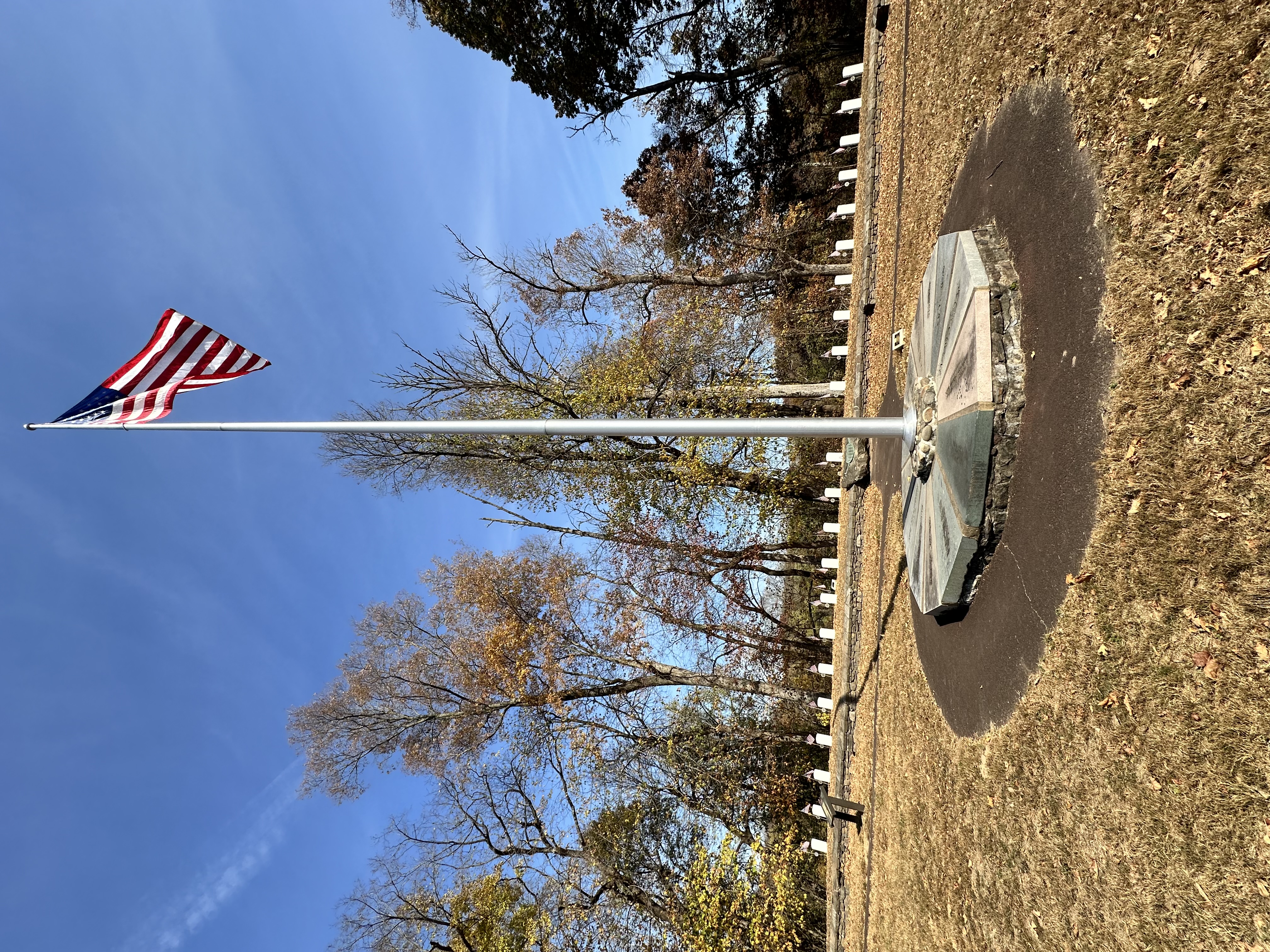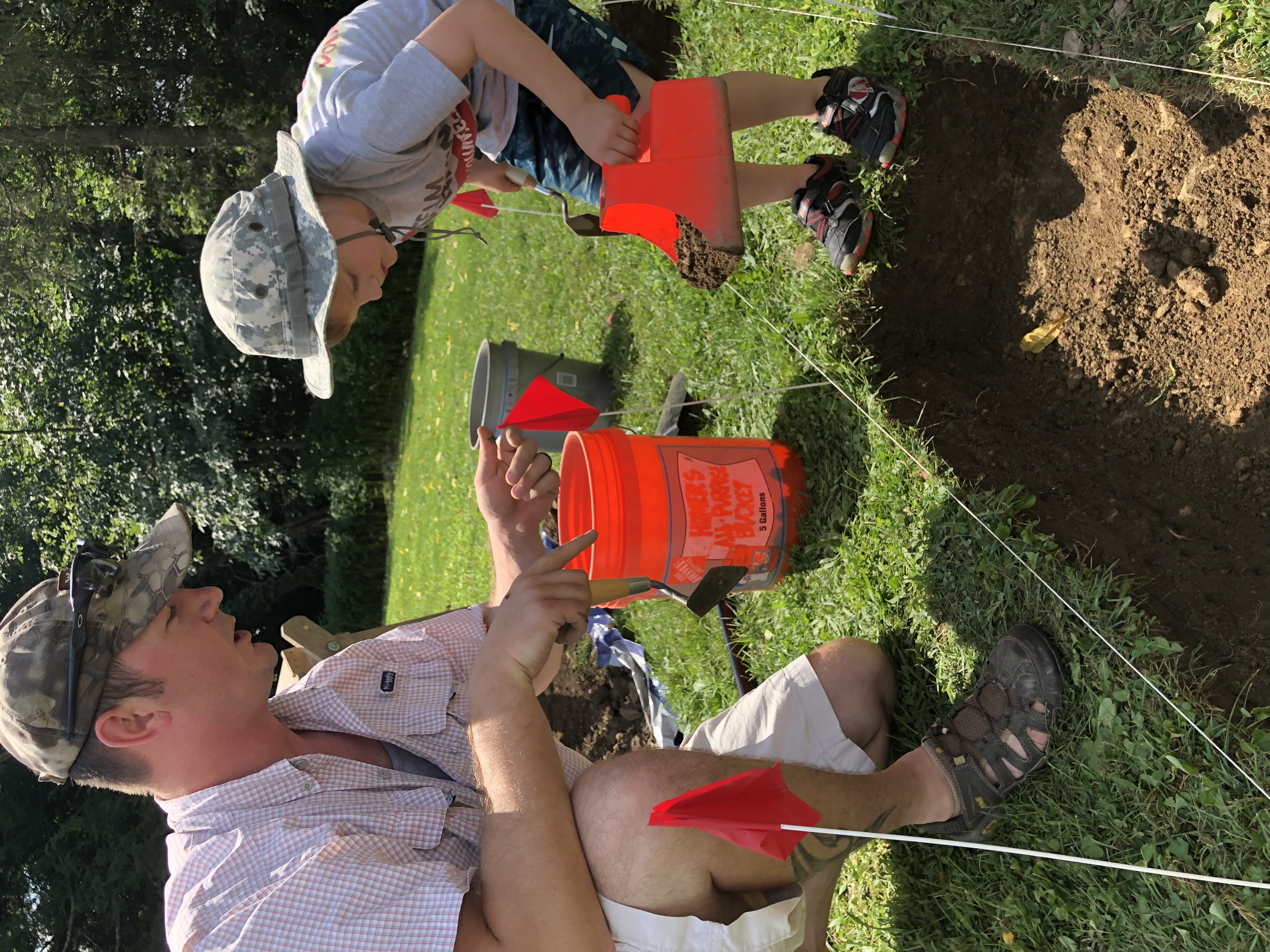Each year, we observe Veterans Day on November 11th. But how has that changed over the course of a century? Originally designated Armistice Day (and still celebrated as such in many European countries), the holiday commemorated the newly won peace at the end of World War I in 1918. It later came to mean a recognition of the sacrifices of veterans for that peace and other times of peace to follow. In 1954, the holiday was renamed Veterans Day. While it has changed dates and names over the years, the intent to honor peace and veterans' sacrifices remains.
Places that Honor and Preserve
Veterans figure prominently on our landscape if you know where to look. Tracing the footsteps of one of our nation's most famous veterans, General George Washington, is one place to start.
1758
On November 12, 1758, a younger (still red-headed) Colonel George Washington and his patrol were sent out to support a detachment led by Lieutenant Colonel George Mercer in a skirmish with a French war party along the Forbes Road. As the sun began setting and the foggy valleys outside of Ligonier (Loyalhanning) obscured the view of their surroundings, the soldiers clad in partial uniforms and moccasins moved quietly through the woods. Despite his and others' efforts to stop it, Colonel Washington's confused Virginians shot upon each other, killing 40 and injuring more soldiers. Later, in 1787, Washington claimed he was “never in more danger by being between two fires." In the midst of the confusion, the Virginians captured three prisoners with the French raiding party who provided critical intelligence of Fort Duquesne leading to its capture by the British. What came to be known as the Friendly Fire Incident is both a cautionary tale and, until recently, a still disputed location.
1776

The Thompson-Neely
House and Farmstead at Washington Crossing Historic Park (October 2024).
A harsh winter combined with defeats, desertions, and diminishing supplies, found General George Washington (a bit grayer on top) and his American soldiers encamped along the Delaware River near McConkey's Ferry. The Thompson-Neely House at Washington Crossing Historic Park was one of the properties where the Continental Army encamped in 1776 prior to the crossing. Many soldiers used the time of encampment to recover from sickness and injury sustained earlier in the war.
The cold winter took its toll on the Continental Army and an unknown number of soldiers are buried nearby with only one known and marked burial, that of Captain James Moore (under the command of Alexander Hamilton) who died the day of the crossing at the age of 24.

The Graves of Unknown Soliders at Washington Crossing Historic Park (October 2024).
That same blustery, wintry day, December 25, 1776, General George Washington and his dwindling American forces gathered on the Pennsylvania shores of the icy Delaware River. As daylight disappeared, 2,400 troops, artillery and horses crossed the river then moved further into New Jersey to attack Hessian forces in a resounding victory at the Battle of Trenton on December 26. An integral part of the “Ten Crucial Days", Washington's Crossing helped turned the tide of the American Revolution.
Engaging the Past in the Present and for the Future
Present Day

Veteran Richard Wentling and young Team Rubicon Volunteer, Aiden Wentling, at Fort Ligonier (August 2019).
With so much of our history preserved in place across the Commonwealth, our communities can find a number of ways to engage more fully with our shared heritage on holidays like Veterans Day. One simple way to show support is to visit any of the historical places where veterans served or are commemorated.
We can ensure these stories continue to be told and provide ways for future generations to engage meaningfully with them by supporting ongoing and multi-disciplinary research.
Since 2015, Dr. Jonathan Burns of Juniata College's Cultural Research Institute has led archaeological field schools focused on the archaeological remains of Fort Ligonier and its surrounding area. In 2017, he and his team of multi-disciplinary professionals in specialties like historical and battlefield archaeology, artifacts of the 18th century, soils, terrain analysis, Geographic Information Systems, and remote sensing techniques like Ground-Penetrating Radar, began working with metal detectorists and veterans to help better understand the history of the fort, its surrounding landforms, and later finding the location of the Friendly Fire Incident, as well as the mass burial of the veterans that died that day.
In 2019, members of the non-profit disaster recovery group Team Rubicon joined Burns and his team at Fort Ligonier to help engage with and identify pieces of their past. Through efforts like the Veterans Archaeology Program (VAP), veterans bring their experiences of military logistics, land navigation, battle tactics, and a hardy willingness to work. For their part, Burns and other professionals provide classroom and field learning opportunities for students and veterans to learn testing strategies like shovel test pit survey, excavating test units, and metal detector survey. Helping to find pieces of their military heritage at “lost" sites is another added bonus! By recovering the past, Burns and military historians are building out a more nuanced and diverse discussion of lesser known, yet equally impactful, history.
In the summers of 2023 and 2024, Pennsylvania Department of Conservation and Natural Resources (DCNR) staff at the Forbes Forest District in Laughlintown lent their efforts and metal detectors to the VAP. They worked alongside professional archaeologists, students, and volunteers to help unearth artifacts ranging from recent farming to Colonial-era finds often associated with military movement. Artifacts and evidence continue to accumulate in the effort to identify where veterans of an earlier war were laid to rest along a now forgotten section of frontier road.
DCNR acts as a steward to several thousand historical and archaeological resources found in the Commonwealth's 124 state parks and 2.2 million acres of state forest land. Under the Pennsylvania Constitution (Article I, Section 27), “The people have a right to clean air, pure water, and to the preservation of the natural, scenic, historic and esthetic values of the environment." Similar to the management of natural resources, the Cultural Resources program at DCNR seeks to preserve, contextualize, and manage the shared public heritage and cultural resources of all people to the benefit of present and future generations' use, education, and enjoyment.
Interested in learning more about these people and places?